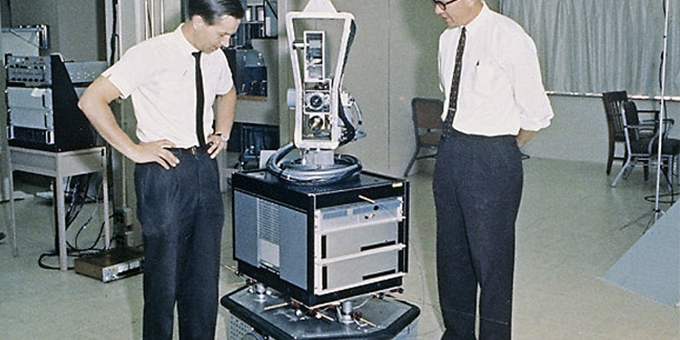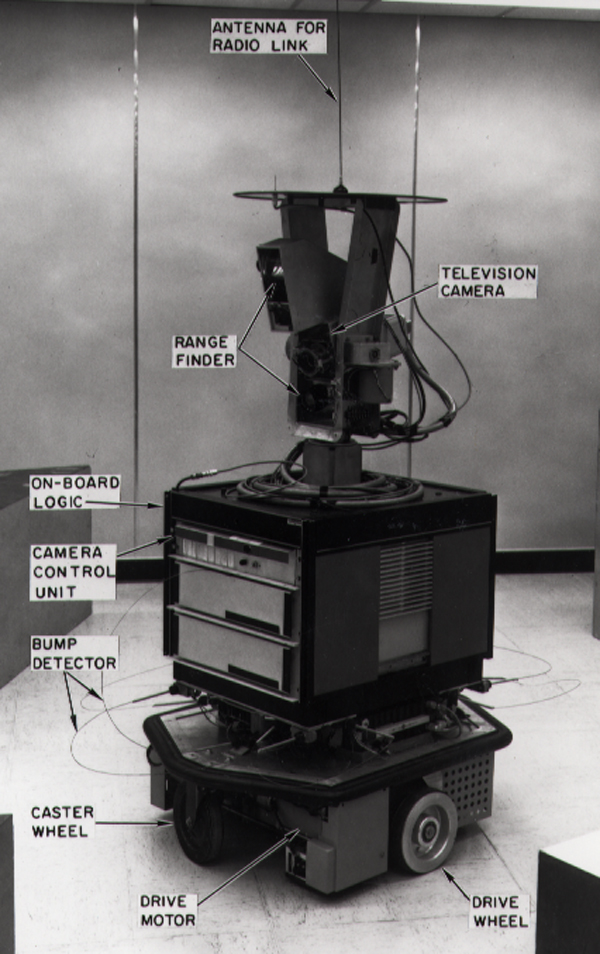A reprogrammable, multifunctional manipulator designed to move material, parts, tools, or specialized devices through various programmed motions for the performance of a variety of task.
 From Shakey to Space Exploration: Understanding the Evolution of Robotics
From Shakey to Space Exploration: Understanding the Evolution of Robotics

Diana Lopez
As one of the original definitions of ‘robot,’ this description is from the Robot Institute of America and quoted by Stanford. Though it was written in 1979, it’s still fitting, as robots have been used in countless applications and industries, from massage therapy, medicine, manufacturing, code analysis, and even space exploration. That being said, the field of robotics has evolved significantly since its initial development. Keep reading to learn all about the fascinating history and evolution surrounding robotic technology!

A ‘Shakey’ Start
While robotics have been implemented in some way, shape, or form in Egyptian history, it wasn’t until the turn of the 17th century when the western world was exposed to modern automation. But the first robots were nothing like their depictions in science fiction entertainment, and the word ‘robot’ wasn’t even used until 1921.
Today, most of think of the main quality of robots as autonomous. For example, while a remote controlled drone wouldn’t necessarily be considered a robot, a drone-like object that can take off and land by itself has the ‘intellect’ and autonomy to be considered a robot. With this definition, autonomous robotics weren’t implemented until the 1960s, when Silicon Valley-based engineering company SRI International developed Shakey. Shakey is considered by many experts to be the world’s very first perceptive and mobile robot. This robot was clearly named after its activity, which was shaky, unbalanced, slow, and twitchy. Still, equipped with bump sensors and a camera, Shakey was able to effectively navigate a complicated physical environment.
“It wasn’t a particularly confident-looking machine, but it was the beginning of the robotic revolution,” writes Matt Simon on Wired -- and he was right. From there, robotic arm development skyrocketed, with engineers producing a slew of autonomous arm-like creations including the Stanford Arm, the Silver Arm, Puma350, and CyberKnife. Watch any episode of How It’s Made and you’ll see examples of similar automated machines replacing what otherwise would’ve been tedious and repetitive manual labor for humans.
The future of robotics is likely just as creative and innovative as its past -- from residential and commercial applications alike, the role of robotics will undoubtedly only continue to exponentially expand. Self-driving cars are just one innovation example that’s grown astronomically in popularity within just the past few years. Shipping companies, healthcare companies, and utility companies will only grow in the number of ways they integrate robotics into their daily manufacturing routines. Sounds exciting, but don’t look to science fiction to get an accurate representation of what to expect in a future dominated by robotics. Dennis Spaeth of CTE Mag said it best:
“Breakthroughs in automation and programming will continue to improve what humans have been seeking to advance for years: communication, education, and life itself.
* Photo: SRI
The content & opinions in this article are the author’s and do not necessarily represent the views of RoboticsTomorrow
Featured Product

